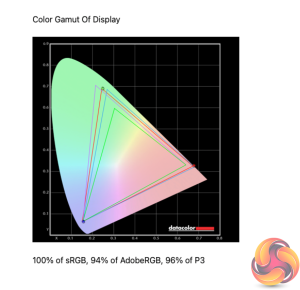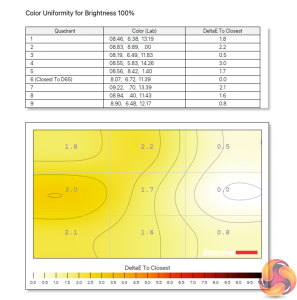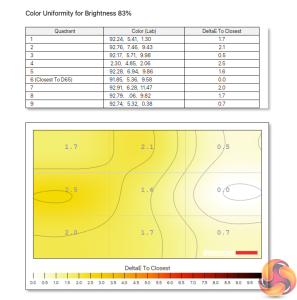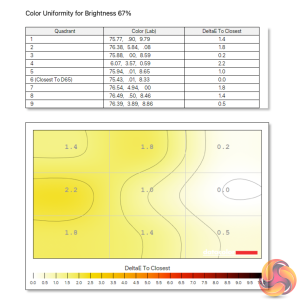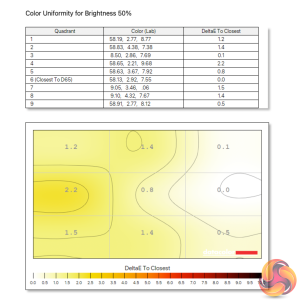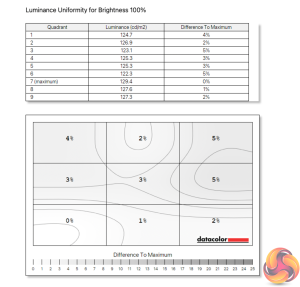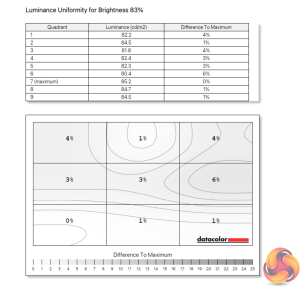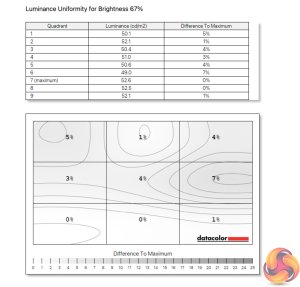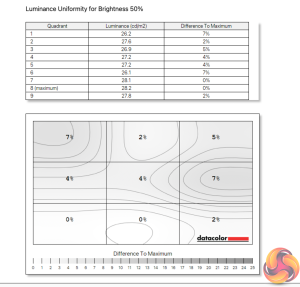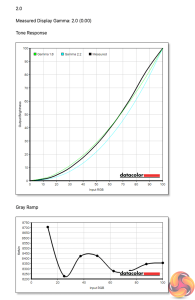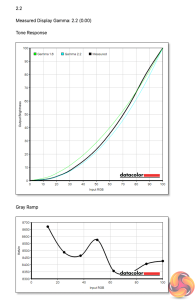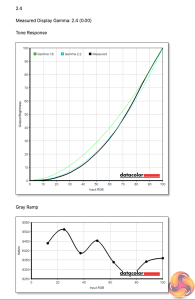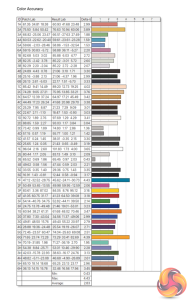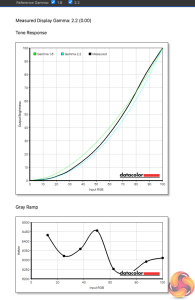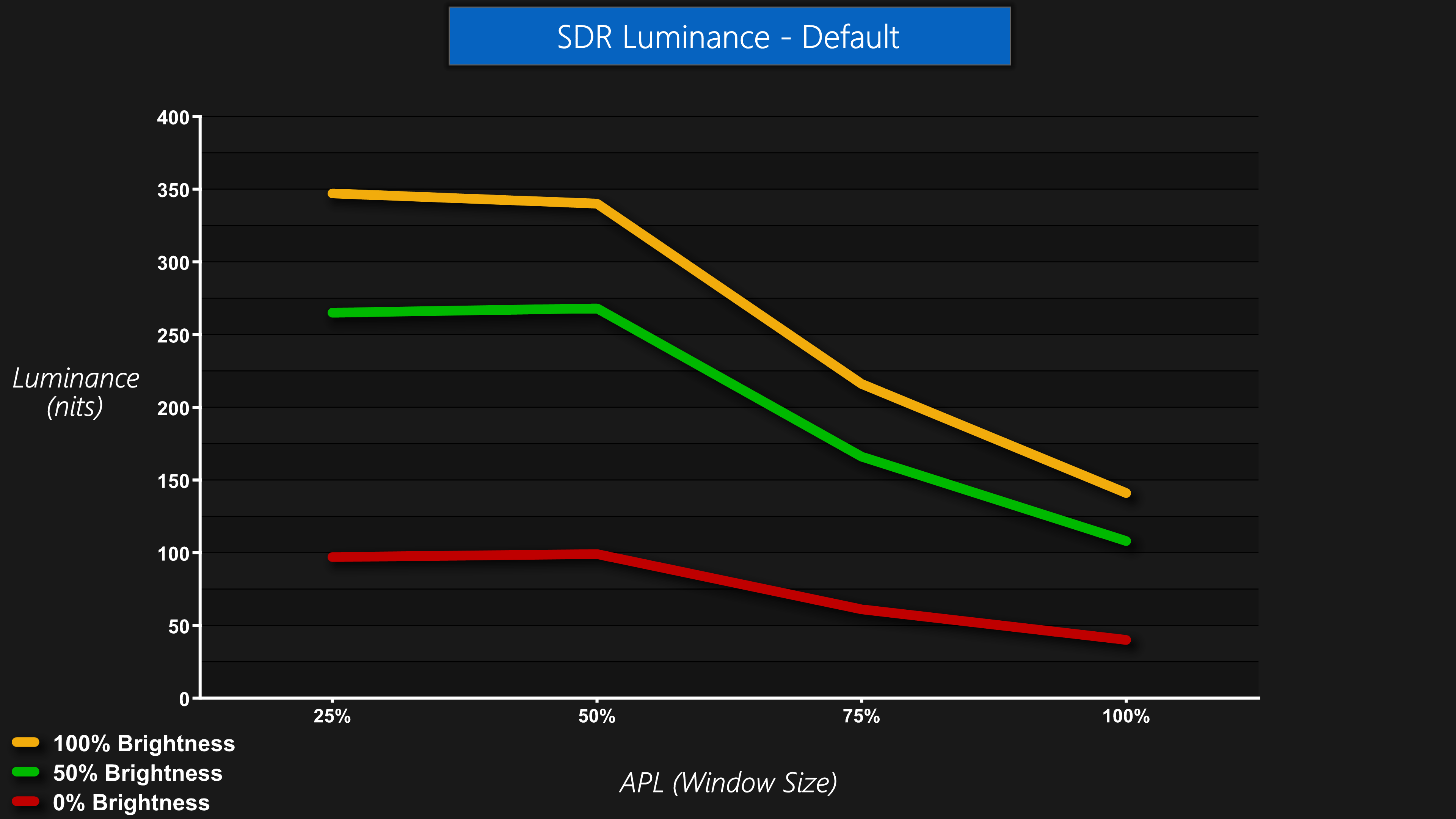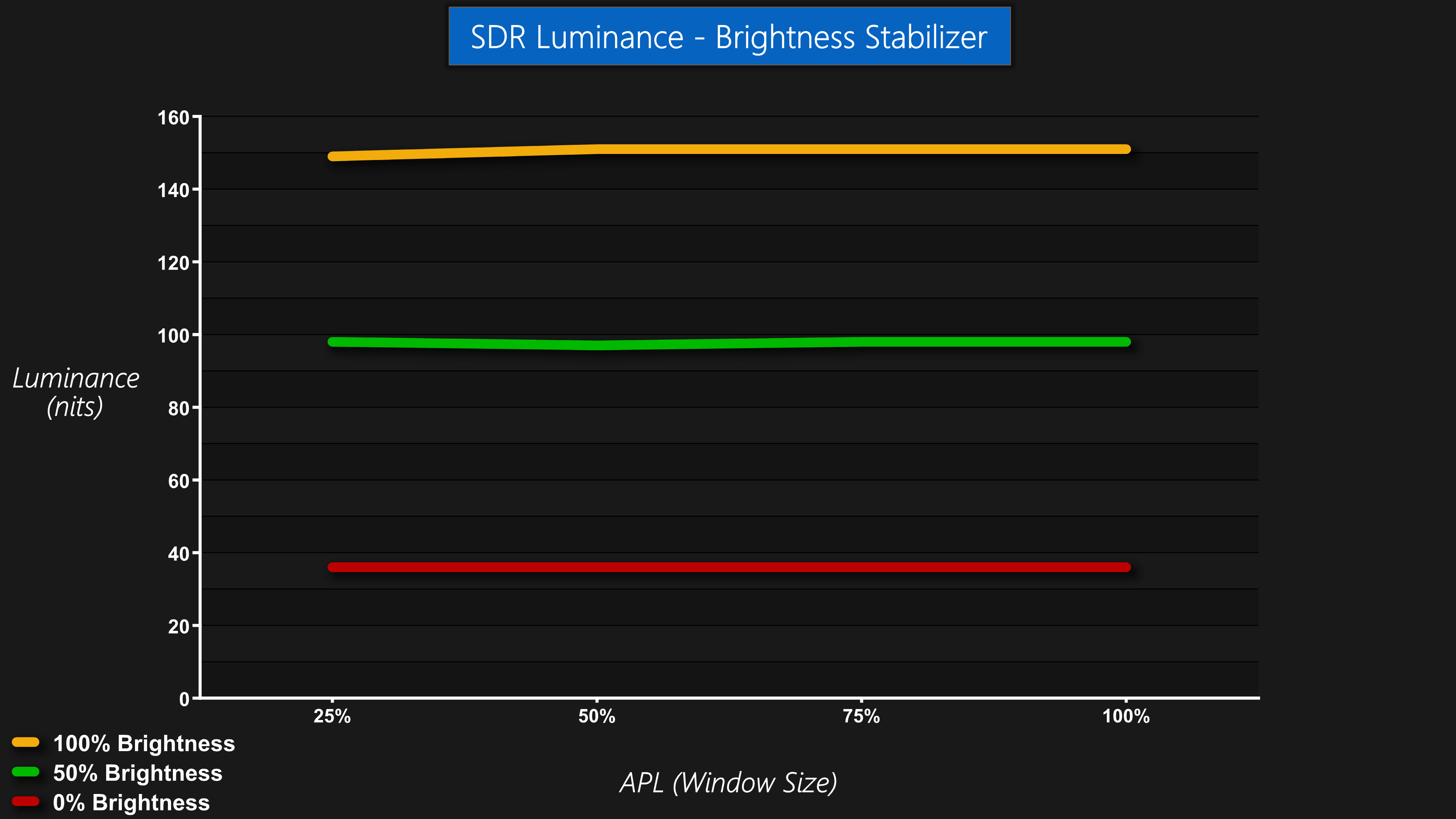Our main test involves using a DataColor SpyderX Colorimeter to assess a display’s image quality. The device sits on top of the screen while the software generates colour tones and patterns, which it compares against predetermined values to work out how accurate the screen is.
The results show –
- A monitor’s maximum brightness in candelas or cd/m2 at various levels set in the OSD.
- A monitor’s contrast ratio at various brightness levels in the OSD.
- The brightness deviation across the panel.
- The black and white points.
- The colour accuracy, expressed as a Delta E ratio, with a result under 3 being fine for normal use, and under 2 being great for colour-accurate design work.
- The exact gamma levels, with a comparison against preset settings in the OSD.
We first run this test with the display in its default, out-of-the-box state, with all settings on default. We then calibrate the screen using the Spyder software and run the test again.
As a reminder, the firmware on our prototype sample is not final so these results are subject to change.
Pre-calibration
Gamut is very strong, offering 100% sRGB coverage, 94% AdobeRGB and 96% DCI-P3 reporting. Corsair claims 96.5% AdobeRGB and 98.5% DCI-P3 so we're slightly below those figures, which could be something that will change with the Flex's final firmware.
Both colour uniformity and luminance uniformity are excellent however, with only very minor deviation across the panel.
The Gamma curves shown are slightly wonky. According to the SpyderX we did average a value of 2.2 using the Gamma 2.2 setting within the OSD, but you can see the curve isn't quite right. We show on the next page how we were able to observe slight variations in luminance levels when testing with the Open Source Response Time Tool, so it's possible the SpyderX isn't able to get a full picture here. Or it could be another thing to be cleaned up by the final firmware.
Out-of-the-box colour accuracy is one thing Corsair has already identified as needing improvement. We're told final units will come factory calibrated with a DeltaE of less than 2 – my sample tested an average of 2.83.
Post-calibration
We were able to improve this via manual calibration with the SpyderX, but even then we have seen much better results from far cheaper monitors, so I'd expect Corsair's final firmware to offer a big improvement here. We also re-tested the Gamma 2.2 setting after calibration and saw no change.
Luminance/APL
The APL, or Average Picture Level, is something we don't usually test, but as the Flex is an OLED screen, this is quite an important aspect when using the monitor on a daily basis. APL refers to how much of the screen is displaying a light image, versus a dark image. This is important as the lighter an image on screen, the more pixels have to turn on at higher power levels, resulting in a dimmer image.
I tested the Xeneon Flex with the brightness set at 100%, 50% and 0% in the OSD. We can see a clear drop off in luminance as the APL increases. We measured a peak of about 350nits for a 25% APL, dropping to 141 nits at 100% APL.
There is however, a Brightness Stabilizer option with the OSD. This is designed to limit the brightness of the screen so there's no change in visible luminance, regardless of APL. In practice I found it to work perfectly, as shown above, with the 100% brightness setting resulting in a measured brightness of 151nits, regardless of APL.
 KitGuru KitGuru.net – Tech News | Hardware News | Hardware Reviews | IOS | Mobile | Gaming | Graphics Cards
KitGuru KitGuru.net – Tech News | Hardware News | Hardware Reviews | IOS | Mobile | Gaming | Graphics Cards



